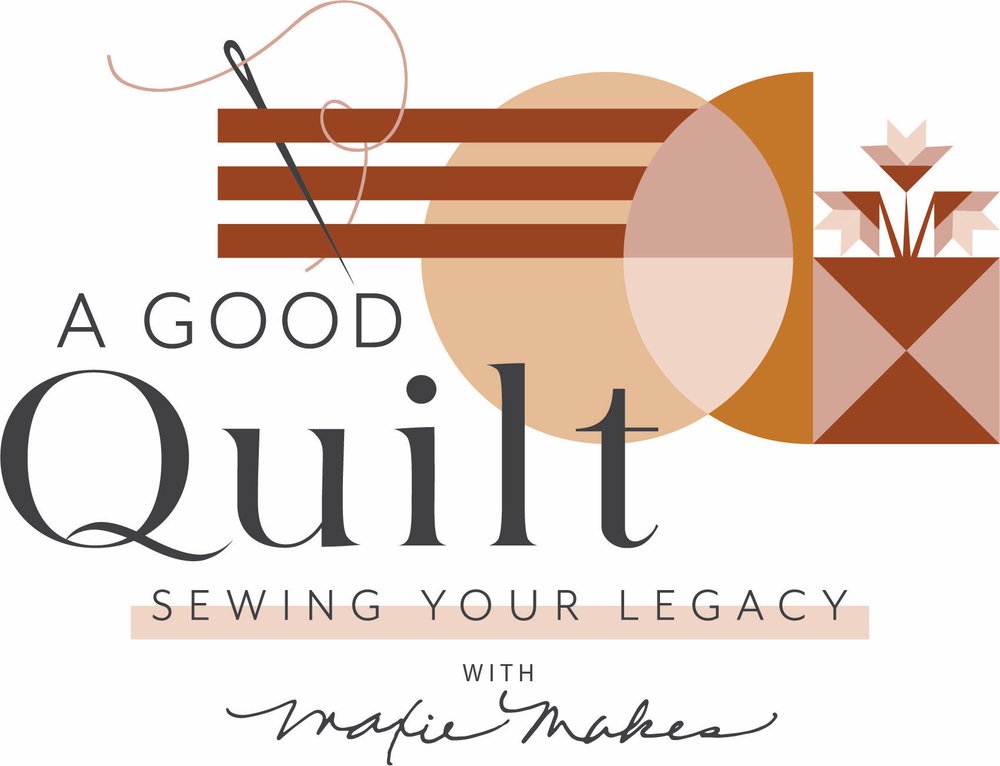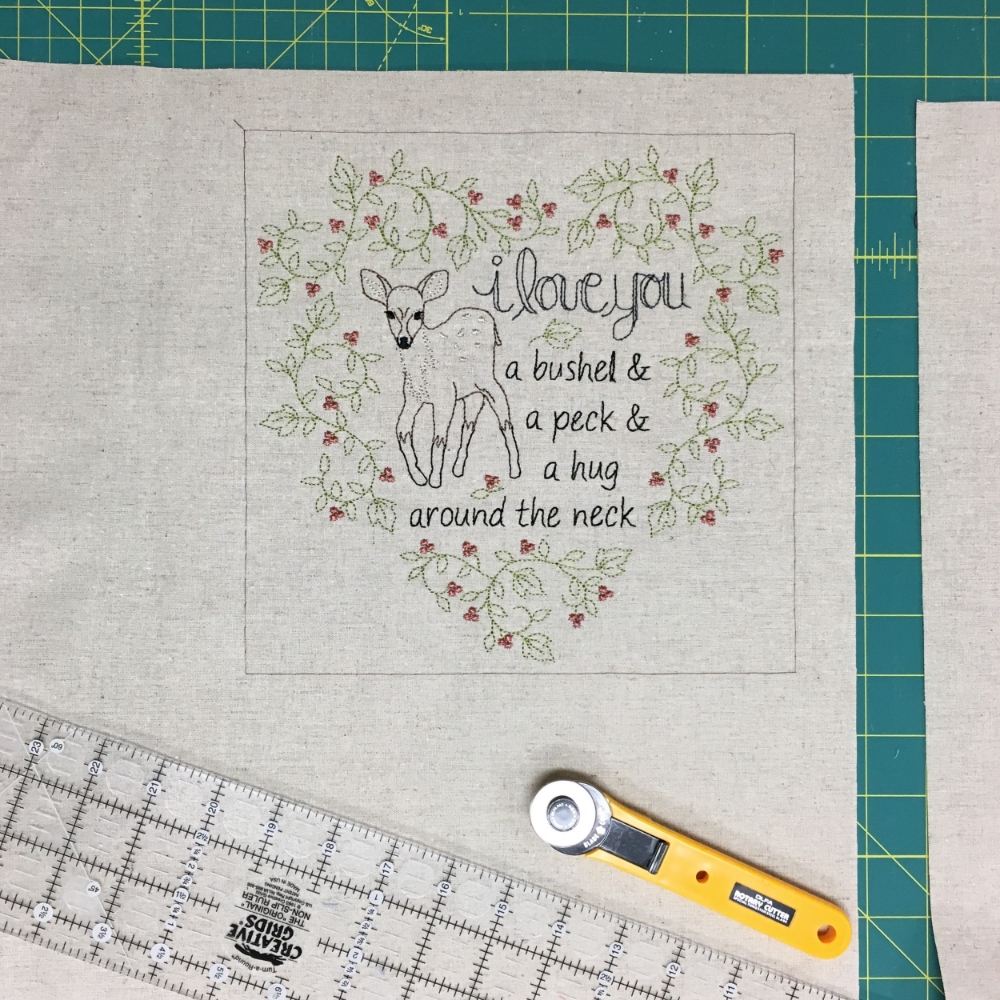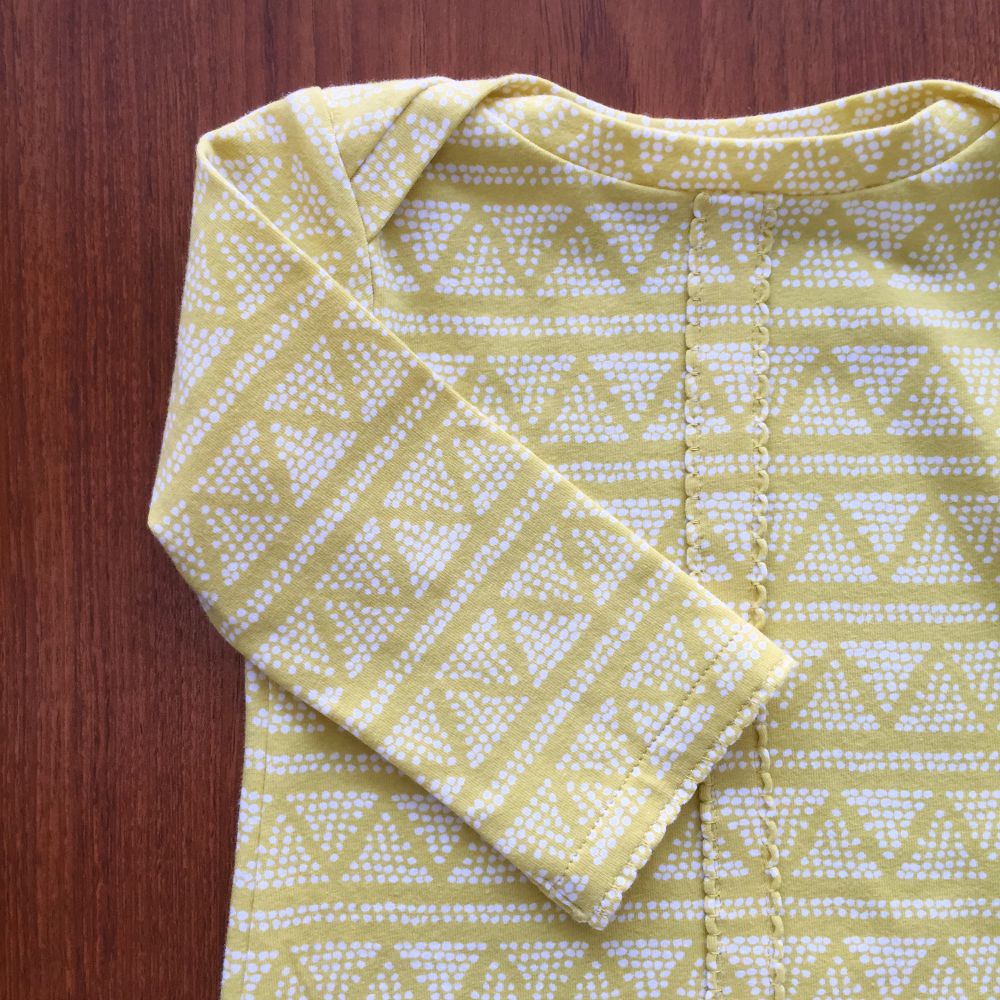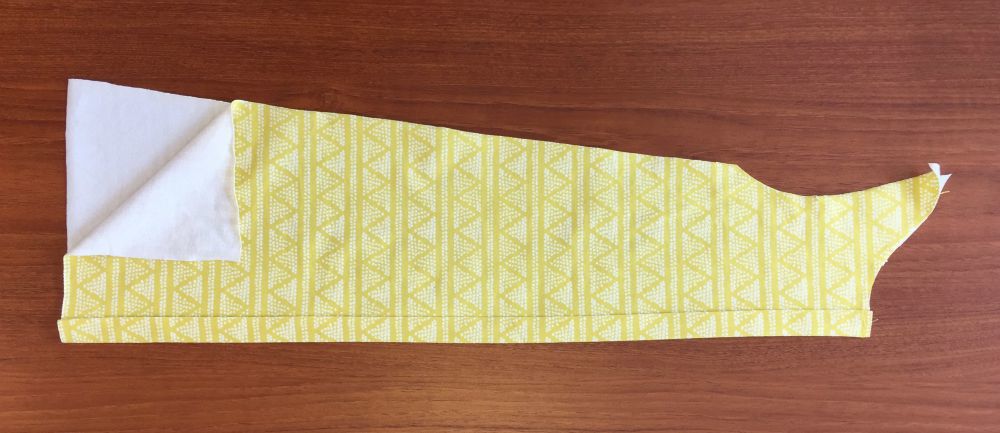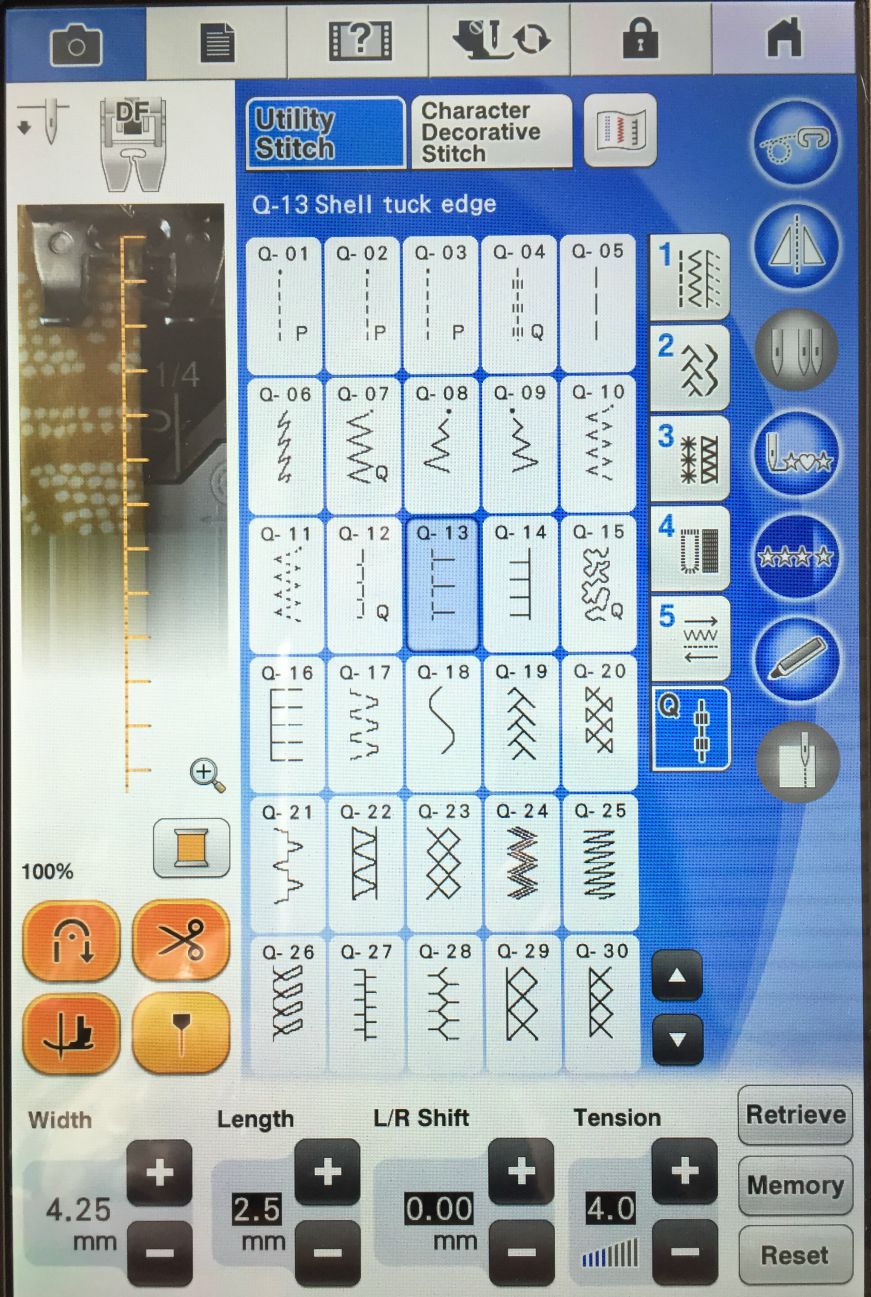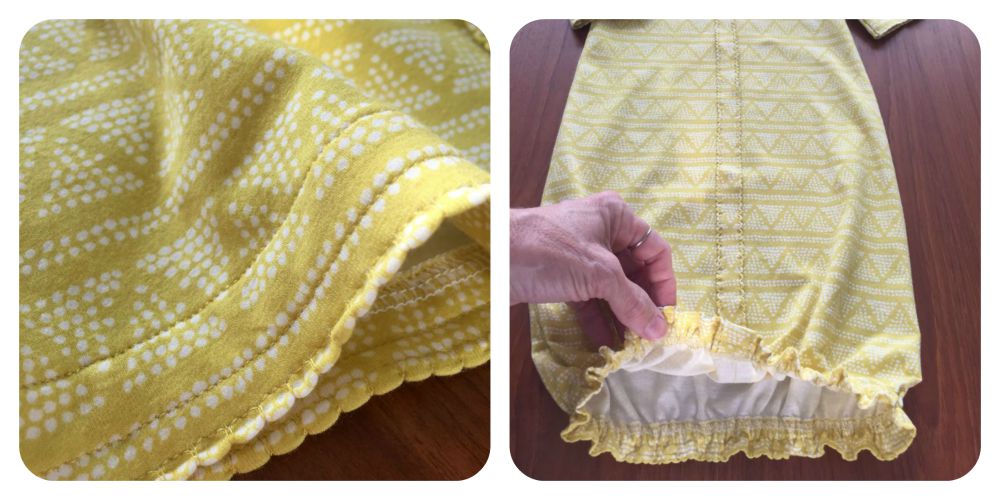Just in time to make that strawberry pie, this apron is a quick project, perfect for your cooking day on Easter or to tuck into an Easter basket as a gift! Made from a tea towel, nothing could be easier or faster to create. You'll be in and out of the sewing room in no time!
Supplies include a tea towel (I used Riley Blake's Bunnies and Cream towel and prints), 1/2 yard fabric for a ruffle and pocket, 1/4 yard for neck/tie strap and a scrap for the applique monogram.
Want to fancy it up a bit? Try adding an applique´monogram. I chose a circular monogram, like this one from Designs by JuJu, stitched on my Baby Lock Destiny. Using the camera for placement made it a breeze to center.
After stitching the monogram, the first step is to shape the apron by trimming away a triangle from each top corner. Refer to the photo below to see the approximate size to trim away. Nothing is concrete here, just trim the corners, bearing in mind that you will fold about 1.25" to the back side and stitch along the edge to form a casing for the neck strap/ties.
Next, round the bottom two corners. Serge or zig-zag all the raw edges. Press under 1/4" on the top, angled corners and fold about 1.25" to the back side. Stitch along the pressed edge to form the strap casing. Make the strap by cutting three 2.5" strips, width of fabric and sewing them end to end. Sew into a long tube and turn. A tube turner is your best friend here! For this long strap, leave the opening for turning in the mid-section. This allows you to stitch across each end for a nice finish, and turning half the tube at a time is much easier than turning the whole long tube.
For the ruffle, cut three 4" strips, width of fabric. Stitch together end to end. I like to use this rolled hemmer foot to finish each long side of the ruffle. It leaves a very professional, clean finish. Practice just a bit and you'll be a pro!
Fold under the short ends of the ruffle strip twice and stitch in place to finish the ends. Gather the ruffle strip to fit the apron's edge, beginning and ending at the bottom of the strap casing on each side. Lay the gathering over the serged/zig-zaged edged, overlapping the edge by about 1/2", and straight stitch it in place.
Run the tie/neck strap through the casings and toss on a sweet little pocket, if you like, and you're finished! Enjoy!
Thanks for stopping by! Happy sewing and God bless!
Maxie
